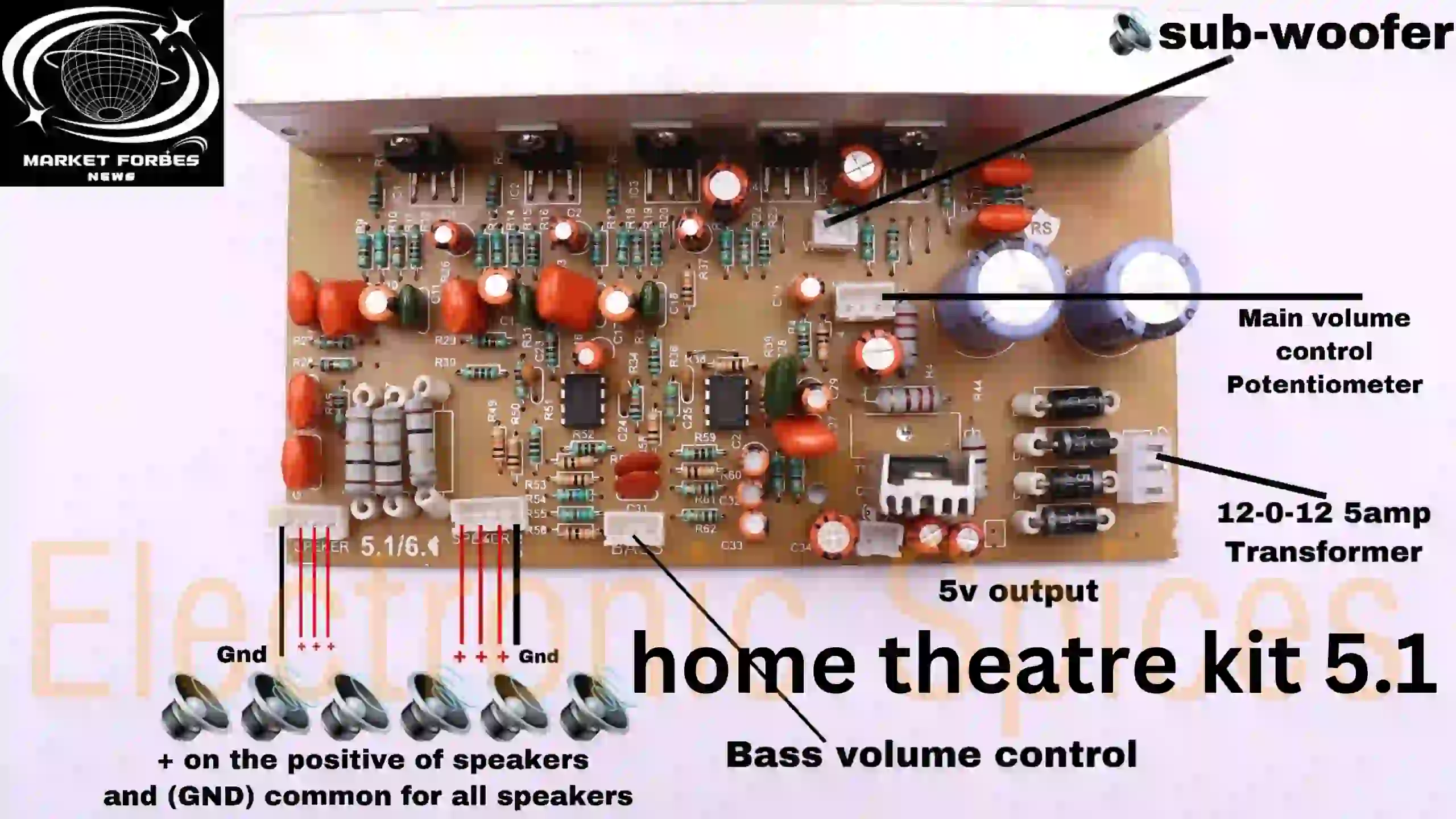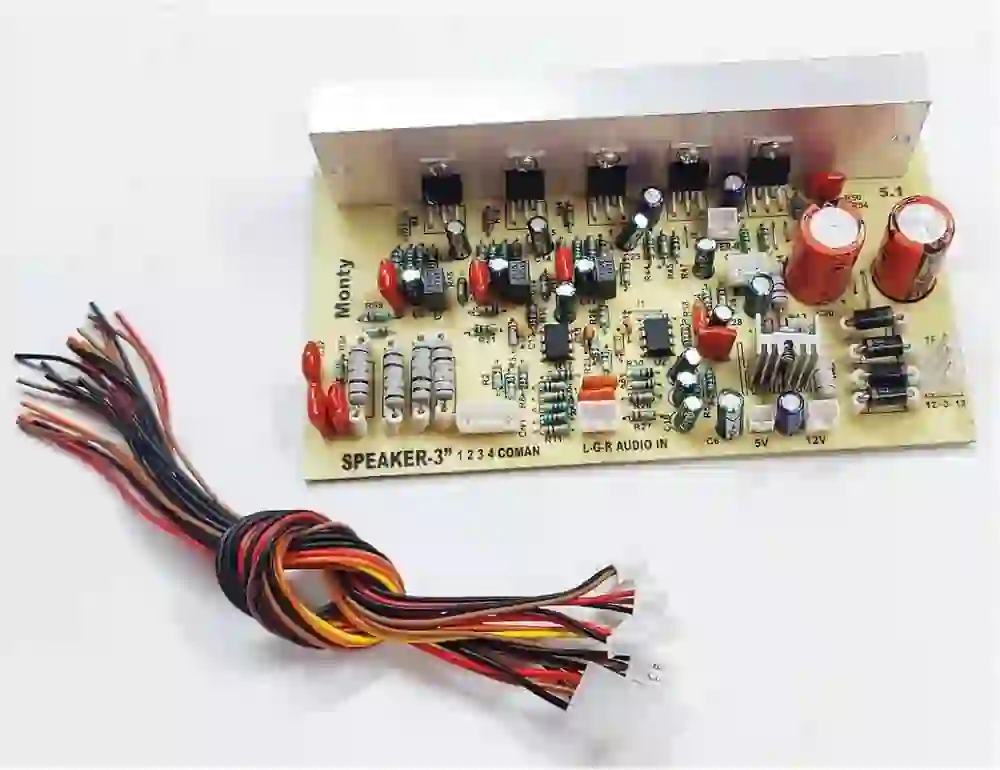The Ultimate Guide Exploring and Setting Up Home Theatre Kit 5.1

When it comes to enhancing your movie nights, sports viewing, or even just listening to your favorite tunes, a 5.1 home theatre kit can be a game-changer. The rich, immersive sound it offers transforms your living room into a mini-cinema, making every experience more engaging. But with so many options on the market, choosing the right system can be daunting. That’s where this guide comes in—let’s dive into everything you need to know about 5.1 home theatre systems.
Understanding the Components of a 5.1 Home Theatre Kit
At its core, a 5.1 home theatre system includes five speakers and one subwoofer. Each component plays a specific role in delivering high-quality sound:
- Front Left and Right Speakers: These are responsible for the majority of the sound, handling everything from music to dialogue.
- Center Speaker: This is the most important speaker for dialogue. It ensures that voices come through clearly, so you don’t miss a word.
- Rear, Surround Speakers: Placed to the sides or slightly behind the viewer, these speakers create the surround effect, adding depth to the audio.
- Subwoofer: The subwoofer delivers deep bass, making explosions, drum beats, and other low-frequency sounds more impactful.
Finally, there’s the receiver. This device acts as the hub, connecting all your speakers and subwoofer, and processing the audio signals from your TV, Blu-ray player, or other devices.
Benefits of a 5.1 Home Theatre System
Why should you opt for a 5.1 setup? Here are a few compelling reasons:
- Immersive Sound Experience: The combination of surround sound and bass makes movies and music feel more dynamic and lifelike.
- Ideal for Medium to Large Rooms: A 5.1 system fills the room with sound, providing an even audio experience, no matter where you’re seated.
- Versatility: Whether you’re watching movies, playing video games, or listening to music, a 5.1 system performs well across all types of content.
Key Features to Look for in a 5.1 Home Theatre Kit
Not all 5.1 systems are created equal. Here are some critical features to consider:
- Sound Quality and Speaker Types: Look for systems with high-quality drivers and materials. Bookshelf speakers often deliver better sound than smaller satellite speakers.
- Connectivity Options: Decide between wired or wireless systems based on your room setup. Wireless systems offer more flexibility but may come with connectivity issues.
- Device Compatibility: Ensure the system works well with your TV, gaming consoles, and streaming devices.
- Build Quality and Aesthetics: The design and durability of the system are important, especially if the speakers are prominently displayed in your room.
Top Brands Offering 5.1 Home Theatre Kits
Several brands dominate the market, each offering unique strengths:
- Bose: Known for sleek designs and high-quality sound, though often at a premium price.
- Sony: Offers a wide range of options, from budget to high-end systems.
- Yamaha: Renowned for robust sound and reliable performance.
- Onkyo: Provides excellent sound quality, particularly for those who enjoy tweaking settings.
- Samsung: A good choice if you’re looking for wireless options and smart home integration.

Setting Up Your 5.1 Home Theatre System
Setting up your system can seem daunting, but it’s straightforward with a little guidance:
- Unboxing and Initial Setup: Carefully unpack your components, checking that all parts are included.
- Positioning the Speakers: Place your front left and right speakers on either side of the TV, the center speaker below or above the screen, and the surround speakers to the sides or slightly behind the seating area. Position the subwoofer in a corner for the best bass response.
- Connecting the Subwoofer and Receiver: Use high-quality cables to connect your speakers to the receiver, ensuring the correct polarity (positive and negative connections).
- Wiring and Cable Management: Keep your setup tidy by hiding wires using cable organizers or running them through walls.
Calibrating Your 5.1 Home Theatre System
Once your system is set up, calibration is key to getting the best sound:
- Using Automatic Room Calibration Tools: Many modern receivers come with a microphone that measures the room’s acoustics and adjusts the sound accordingly.
- Manual Calibration Techniques: If your receiver doesn’t have auto-calibration, manually adjust the speaker levels and distances to match your room.
- Fine-Tuning the Sound Settings: Experiment with bass, treble, and other sound settings to suit your personal preference.
Enhancing the Audio Experience
To truly elevate your home theatre experience, consider these tips:
- Acoustic Treatment for Your Room: Adding rugs, curtains, and acoustic panels can minimize echo and improve sound clarity.
- Choosing the Right Content for Testing: Use high-quality content, like Blu-ray movies or lossless music files, to test your setup.
- Upgrading Cables and Accessories: High-quality cables can make a noticeable difference in sound quality.
Integrating Your 5.1 System with Smart Home Devices
In today’s connected world, integrating your home theatre with smart devices can enhance convenience:
- Voice Control: Many systems are compatible with Alexa, Google Assistant, or Siri, allowing you to control your system with voice commands.
- Synchronizing with Smart TVs and Streaming Devices: Ensure seamless operation by connecting your system to smart TVs, streaming devices, and gaming consoles.
- Multi-Room Audio Options: Some systems offer the ability to play music throughout your home, not just in the living room.
Troubleshooting Common Issues
Even the best systems can encounter problems. Here’s how to address them:
- Solving Connectivity Problems: Check all connections and settings if you’re experiencing dropouts or no sound.
- Addressing Sound Quality Issues: If the sound seems off, recalibrate your system or check for software updates.
- Dealing with Interference and Distortion: Move wireless components away from other devices that might cause interference.
Comparing 5.1 Home Theatre Kits to Other Configurations
Before you settle on a 5.1 system, it’s helpful to understand how it compares to other setups:
- 5.1 vs. 7.1 Systems: A 7.1 system adds two additional speakers, providing a more immersive experience but requiring more space.
- 5.1 vs. Soundbars: Soundbars are more compact and easier to install but can’t match the surround sound experience of a 5.1 system.
- 5.1 vs. 2.1 Systems: A 2.1 system, with only two speakers and a subwoofer, is simpler and less immersive than a 5.1 system.
Maintaining Your 5.1 Home Theatre System
To keep your system in top shape, regular maintenance is crucial:
- Cleaning and Dusting the Components: Dust can accumulate on speakers and electronics, so clean them regularly with a soft cloth.
- Software and Firmware Updates: Keep your receiver and connected devices updated to ensure they run smoothly.
- Long-Term Storage and Care Tips: If you ever need to store your system, keep it in a cool, dry place, and pack it carefully to avoid damage.
Budget Considerations: Finding the Right Kit for Your Needs
Your budget will significantly influence your choices:
- Entry-Level Options: Great for those new to home theatre systems, offering decent sound at an affordable price.
- Mid-Range Kits: Provide a good balance of quality and price, ideal for most users.
- Premium 5.1 Systems: These offer top-of-the-line sound and build quality for the audiophile or home theatre enthusiast.
User Reviews and Recommendations
To help you decide, consider these top-rated kits:
- Best 5.1 Home Theatre Kits for Movie Lovers: Look for systems with strong bass and clear dialogue, like those from Bose or Sony.
- Top Picks for Music Enthusiasts: Yamaha and Onkyo are often praised for their musicality and rich sound.
- Kits That Offer the Best Value for Money: Samsung and Sony provide reliable performance at various price points.

Conclusion
Investing in a 5.1 home theatre system is a fantastic way to upgrade your entertainment experience. With the right setup and a little bit of calibration, you’ll be enjoying your favorite movies, music, and games like never before. Remember to choose a system that fits your room, meets your needs, and offers the features that matter most to you.
FAQs
1. What Is the Difference Between 5.1 and 7.1 Home Theatre Systems? A 7.1 system includes two additional speakers, offering more immersive surround sound compared to a 5.1 system, but it requires more space and a higher budget.
2. How Can I Improve the Bass in My 5.1 System? Positioning the subwoofer in a corner or near a wall can enhance bass. You can also adjust the bass levels on your receiver.
3. Can I Expand My 5.1 System to a 7.1 Setup? Yes, many 5.1 receivers support adding two more speakers to upgrade to a 7.1 system.
4. Is Wireless Connectivity Reliable for Home Theatre Systems? Wireless systems offer convenience but can be prone to interference. Ensure a strong Wi-Fi signal and consider systems with dedicated wireless channels.
5. How Long Does a Typical 5.1 Home Theatre System Last? With proper care, a good 5.1 system can last many years, often over a decade. Regular maintenance and updates are key to longevity.










